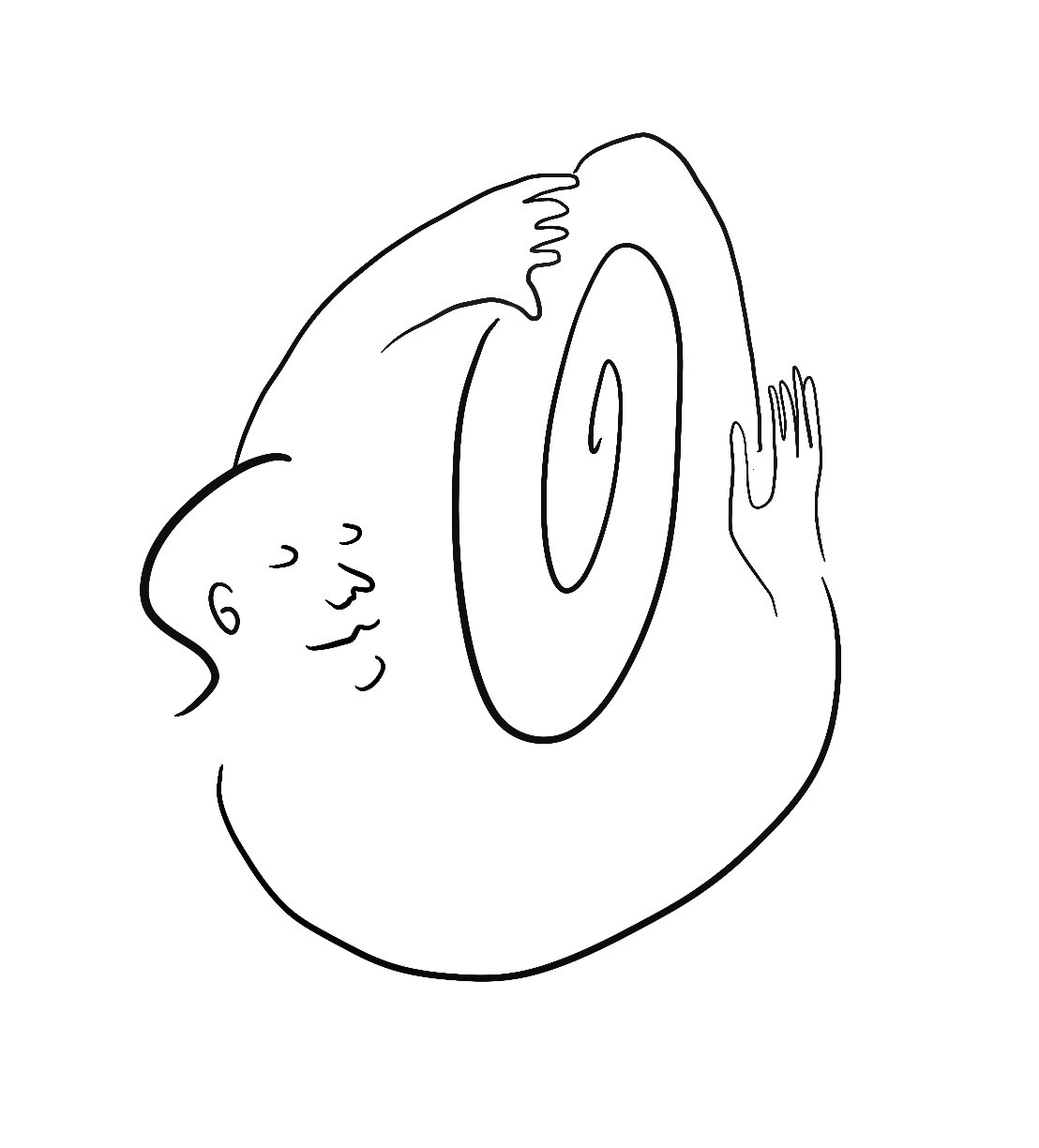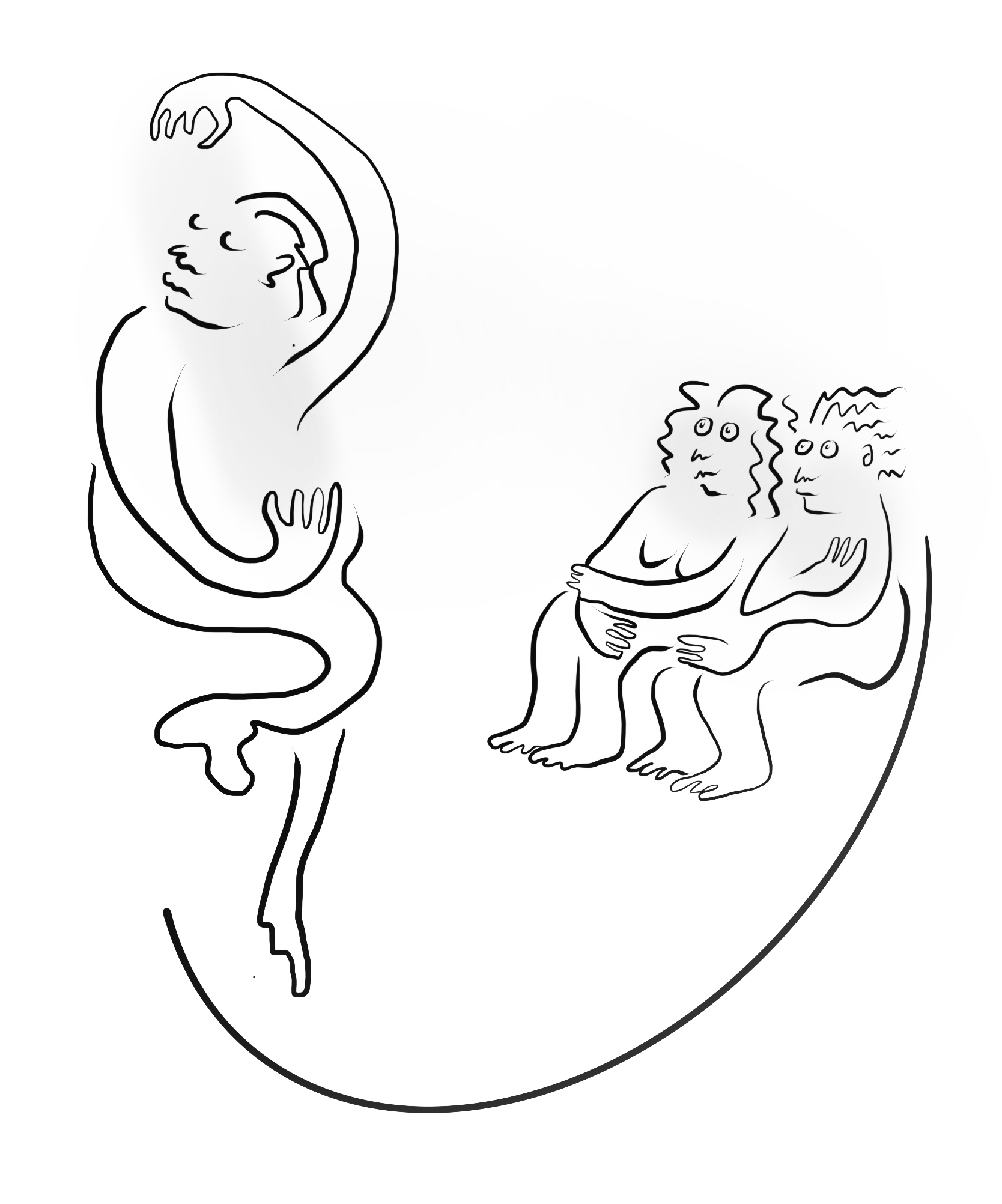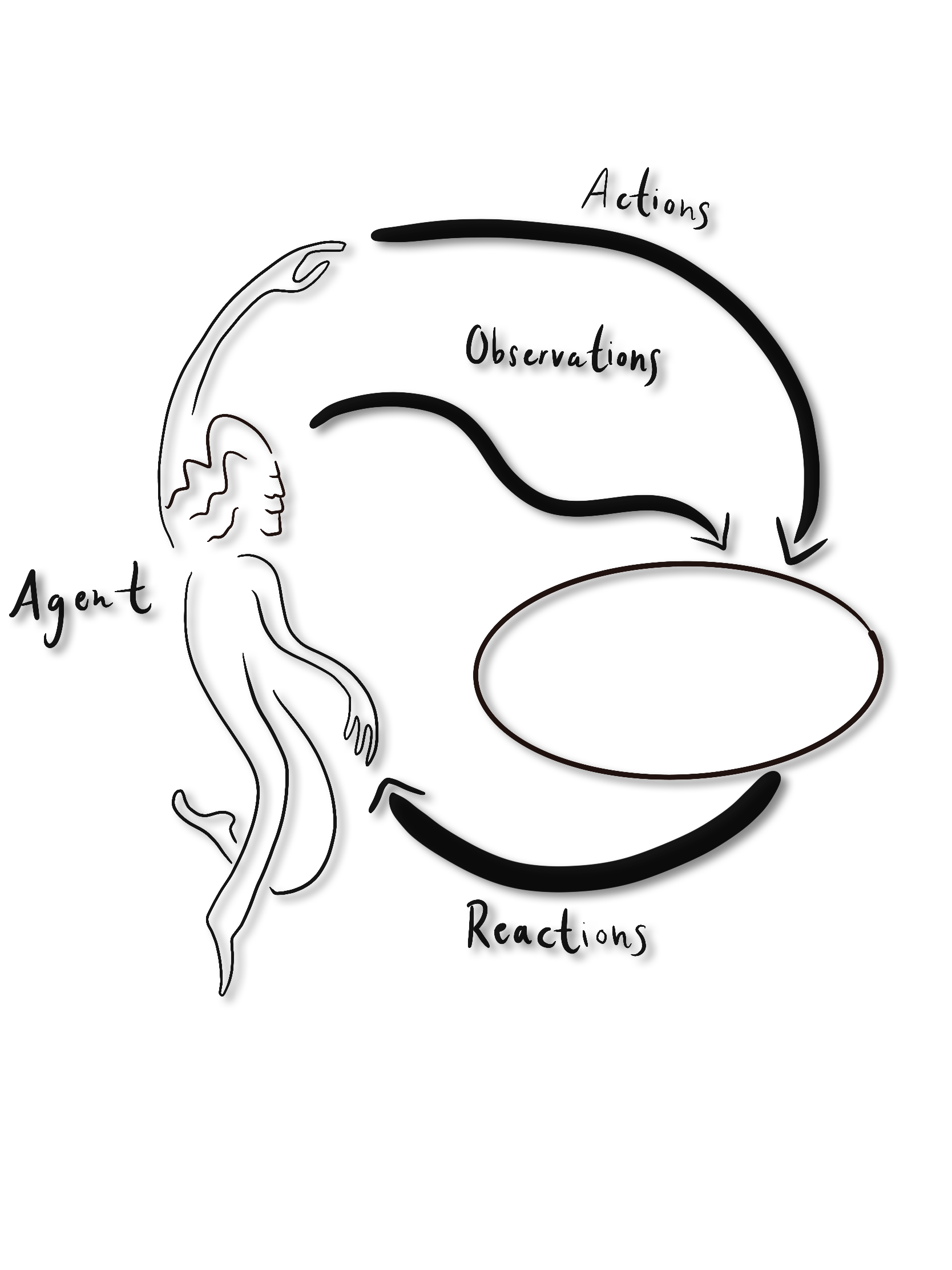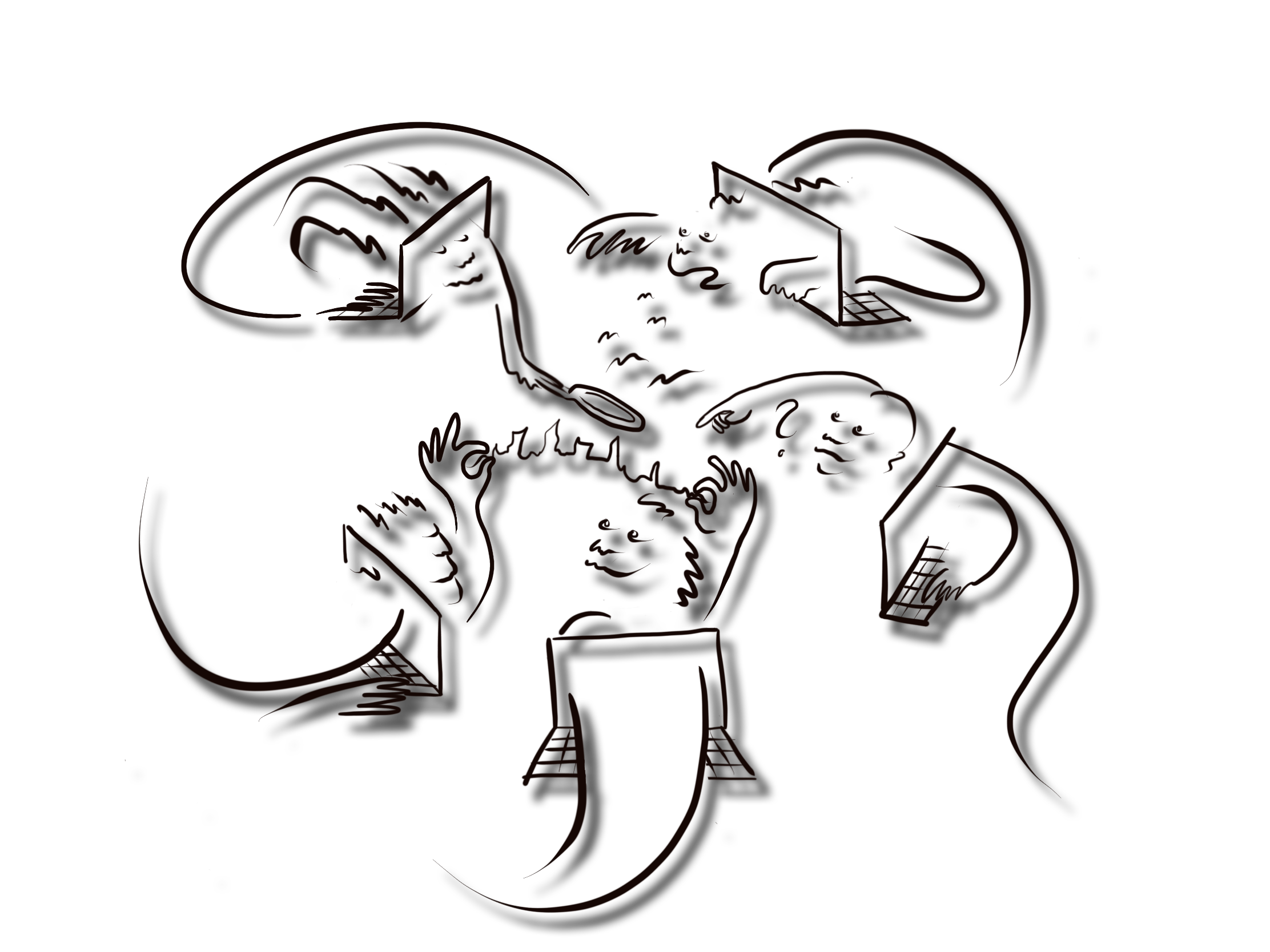late 13c., conceiven, "take (seed) into the womb, become pregnant," from stem of Old French conceveir (Modern French concevoir), from Latin concipere (past participle conceptus) "to take in and hold" (source also of Spanish concebir, Portuguese concebre, Italian concepere), from con- + form of capere "to take" (from PIE root "to grasp"). Meaning "take into the mind, form a correct notion of" is from mid-14c., that of "form as a general notion in the mind" is from late 14c.
![]()
A World
A world is composed of a specific frame of reference, it defines how we perceive and relate to base reality and gives meaning to it.
A world needs us to believe in it so it can protect us from overwhelming complexity.
A world follows it’s own logic and dynamic.
Once externalized it takes a life of its own.
“A World is an artificial living thing,
but a living thing nonetheless.” — Ian Cheng

Worlding
There are different ideas of what the activity of worlding pertains. It ranges from the imagination and fostering of fantastical cosmologies, utopias or futures you can believe in to the construction of new reality systems or the active forging of functional systemic alternatives.
Gameworlds often reinforce stereotypes and perpetuate past and present power structures as well as their claims on Worldmaking. To produce stories which defy the dominant narrative, requires a critical analysis of representation in storyworlds, but also the invitation of diverse authors into their making.

Multiple Worlds
This research begins with attempts at dissolving the illusion of a ‘common world’, that appears already co-opted by satisfying hegemonial claims for (its) order. Surely, colliding worlds are confronting. Their crashing can make a mess in our shelf of convictions as it unravels the seams of our thinking fabric and yet, this is a proposal to embrace complexity, leaving the comfort of one's own skull or self applauding filter bubble.In Ways of Worldmaking (1978) Nelson Goodman already performs the ontological turn away from a dualist approach of ‘Many worldviews, only one world’. What follows it the radical gesture of multiplying the world. Once we have shattered the illusion of the universal, what are the implications of this such relativism for public and artistic discourse? How can we construct a common place in which multiple worlds intermingel instead of drifting apart in a fight about the centerstage?

Worlds end...
The conditions that make a world, naturalizes its construction. Which makes it seem unchangeable. It perpetuates a law like structure of being complete, or ‘natural’
Still all worlds eventually come to an end…
As ‘model’ becomes outdated (new knowledge is produced) or because the conditions it produces become unlivable.
Let us assume that ‘Western Modernity’ faces a similar fate. ‘An End to "this" World’ (2019) Denise Ferreira da Silva

Common World vs. Worlds in Common
The discrepancy between globalized modes of inhabitation and a (theoretical) planetary condition can be captured in the following distinction: the difference between the making of a common world vs. the making of worlds in common. — Patricia Reed
The making of a common world is coincident with ‘the entropic tendency towards the elimination of the diverse’,— Bernard Stiegler
Dissolving the illusion of a ‘common world’, that appears already co-opted by satisfying hegemonial claims for (its) order and taking the underlying theory of multiple worlds as a point of departure for exercises in ‘Collective Worlding’.

Worlding is also the unmaking of the world: it requires us to rethink our relation to the environment and our own role within it. Instead of trying to fix a broken system we can change a world by reconfiguring its frame of reference.
‘But how to think of frameworks for an unrealized world?’ - ‘The End of a World and its Pedagogies’, Patricia Reed, 2021, Making & Breaking
Relational Worlding
Relational Worlding shifts the focus from existence to coexistence, from questions of where things are to how they hang together. It considers entanglement and interdependence on a micro and macro level.
Instead of channeling energy and resources into new inventions that fix the world it sets out to changing the world itself, that beeing the ideas and attitudes inside our heads.

Otherworlds
Against the crisis of imagination, also diagnosed by Mark Fisher as ‘depressive ontology’ (The impossibility to envision a future that is different than the past) Collective Worlding may open ourselves to other forms of knowing, reconnect us to our sensual and social bodies and lay foundations for new forms of cohabitation.
→ For many people perpetual apocalypses have arrived long ago and many of the techniques and tactics of ‘otherworlding’ are owed to their legacy and resistance as survival.
Instead of starting from scratch or zooming in from an scientific abstraction and distance that recalls the map making and of settler colonial forms of ‘Worlding’ Collective Worlding produces flexible, relational, opaque, incoherent (inter)subjectivities and above all include the body with all it’s senses into the narration of the self.
Plasticity
Imagining scenarios in an emotionally neutral place can change our attitude to that place in reality.
The more immersed people tend to get into 'becoming' a fictional character, the more they use the same part of the brain to think about the character as they do to think about themselves.
People make their own brains, Imagine if they knew that and they could construct and entertain a relation with their brain as the image of a world to come.
Somatic Worlds
Role Play offers a form of double consciousness of being immersed and simultaneously observing one's own action and reactions.
Jonaya Kemper reflects on LARP as a tool to release the body from internalized oppression and bias by taking on roles other than those that society may commonly prescribe to it. Role Play becomes a form of “disidentification” from, and active re-coding of, assigned social roles.
Framing dis-order as a rupture to a given and evidently sickening system corresponds to the artistic and activist strategy that delineates a movement away from reforming the outside world to a resistance that turns to a reframing of the inner. ‘Sick Woman Theory’, Johanna Hedva, 2016
Trauma too is embodied. To activate the brain’s natural neuroplasticity to rewire disturbed functioning, the embodiment of new experiences plays an important role’The Body Keeps the Score: Brain, Mind, and Body in the Healing of Trauma’ , Bessel A. van der Kolk, 2014
LINKS:
Around the day in eighty worlds book by Martin Savransky calling for a radical politics of the pluriverse amid the ongoing devastation of the present. Responding to an epoch marked by the history of colonialism and ecological devastation, Savransky sketches a “pluralistic realism”—an understanding of the world as simultaneously one and many, ongoing and unfinished, underway and yet to be made.
EMISSARY'S GUIDE TO WORLDING, book by Ian Cheng presenting practical methods for seeing and making Worlds as a whole-brain activity.
Microscope, collective world building RPG by Lame Mage Productions, that enables players to jump around in time and zoom from the overarching narrative into details of the fractal storyline to pla out scenes and answer questions that the players choose to focus on.
The end of a world and its Pedagogies, article by Patricia Reed on the difference between the making of a common world vs. the making of worlds in common.
Prophetic Culture, book by Federico Campagna on the end of Westernised Modernity, how to die well and how to leave behind inhabitable ruins to the generations that will world anew.
